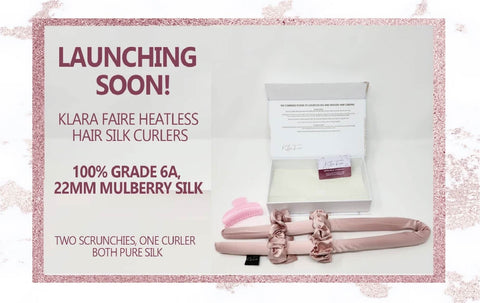How Heat Causes Hair Damage?

Nobody likes frizzy, dehydrated, lifeless, and dull hair...
We are enticed into using heat products more than often and style our hair.
A hot shower, followed by a hot session with a hair dryer, often followed by heat styling with a hair straightener or curling wand, begins the day for many of us. Nothing styles our hair better than heat. Heat can make curly hair straight and straight hair curly. It can tame out of control locks, and make them look as though we just stepped out of a salon.
But what comes after a good styled hair day... is...HAIR DAMAGE.

And heat-damaged hair is not a pretty sight!
If it looks so bad on the outside, imagine what would happen on the inside.
WHAT DOES HEAT DO TO YOUR HAIR?
Every human hair follicle has a fascinating internal structure. It consists of three distinct layers called the cortex, cuticle, and medulla.
The medulla is not substantially affected by heat. However, cosmetic procedures and heat can break down the other two layers of the hair and change its natural physical characteristics considerably.

Credits- Bigen
And this change is long-lasting. It takes years of healing to repair the damage.
HOW MUCH HEAT IS OKAY?
Applying heat to hair does not automatically result in damage every time. Our human hair can actually withstand temperatures up to 450˚F (Yup, that's high!). Hair experts tell us to always keep our hair heating tools under 400˚, even if you have used the best heat protectant products.
You may think, I have thick hair, they seem strong. I am sure they can take heat.
But, even the strongest, thickest hair will begin to get split ends and other signs of damage at 400˚ and above.
And now the best part, no style requires that amount of heat. But it is the styling devices that increase the temperature to a higher level to achieve better straightening and results. So, in order to give you shinier hair, the products give you unnecessary damage. Instead, we you can try more safer ways of styling your hair. You can use the silk curlers .
HOW TO TELL IF YOU HAVE HEAT DAMAGE?

Hair experts believe that your hair ends are the first to show signs of damage.
After that, there are multiple signs that you can observe:
Split Ends
If you love your heat-styling tools, you will most likely end up with broken, frayed ends. Split ends are one of the most telltale signs of heat damage. Sadly, split ends or dry hair ends cannot be reversed, and the only solution is to cut them off.
Hair Breakage And Shedding
Rogue hair and flyaways are bad enough, but another troublesome symptom of heat-damaged hair is breakage and shedding. Heat styling can make your hair brittle and more prone to breakage.
Strong heat also makes the hair shaft weak and fragile, thus triggering hair loss and thinning. So, if you are losing a lot of hair, your heat-styling tools could be causing it.
Overly Dry Hair
Dryness is one of the more obvious symptoms of heat-damaged hair. Excess heat can strip your hair of all its moisture, leaving it brittle and dry.
So if you notice that your hair feels rough, stringy, and dry even after moisturizing it daily, it could be a sign of heat damage.
Dull Hair
Fried hair looks dull and lifeless. This is because damaged hair fibers cause light to scatter instead of bounce back, giving it a rather faded, lusterless appearance.
Read more about heat damage in the Klara Faire e-book.
HOW TO REPAIR HAIR DAMAGE?
The first thing you need to do is...STOP USING HEAT.
Yes, no healing process can start without that.
And that does not mean you don't style your hair.

But styling without heat? How does that work? And how will my hair repair?
I will tell you in my upcoming blogs. Stay tuned :)






Leave a comment